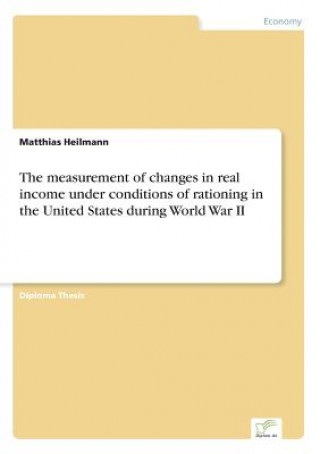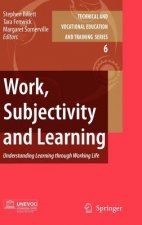
Doručenie
Nákupný poradca





Nehodí sa? Žiadny problém! U nás môžete do 30 dní vrátiť
 Darčekový poukaz
v ľubovoľnej hodnote
Darčekový poukaz
v ľubovoľnej hodnote
S darčekovým poukazom nešliapnete vedľa. Obdarovaný si za darčekový poukaz môže vybrať čokoľvek z našej ponuky.
measurement of changes in real income under conditions of rationing in the United States during World War II
 Angličtina
Angličtina
 234 b
234 b
30 dní na vrátenie tovaru
Mohlo by vás tiež zaujímať


Inhaltsangabe:Abtract: During World War II, the private customers in the United States were confronted with conditions of rationing concerning several consumer goods. The government regulated the allocation of those goods, for example oil, leather, and grain, particularly with regard to their fitness to fight. The U.S. army was preferred to receive such goods instead of giving them to the citizens. Therefore, people had to optimize their consumption decisions with respect to both their budget constraint and rationing of goods. Under the assumption that the households' preferences didn't change during World War II, one major trouble exists from the point of view of index number theory. Because of rationing, the prices of such goods usually change in contrast to a market economy, where the allocation of goods is presumed to be efficient, given prices which cannot be affected by the households consumption. Therefore the actual consumption of any given customer under conditions of quantity constraints need not be optimum with respect to his money outlay and the existing price system. In spite of rationing, the households optimize their utility from consumption given their money expenditures and the price system. Based on this relative strong assumption, one has to estimate a price system, which helps to measure changes in real income under such conditions of rationing. The central idea to solve that problem was introduced by Erwin Rothbarth (1941), who assumed that the quantities consumed under rationing were the same quantities consumed by households in an open market economy to receive their optimum. Rothbarth called such an estimated price system a _virtual price system_, which allowed him to work with the common index number theory. Such a virtual price system makes the quantities consumed under rationing a consumption optimum, i.e. the maximum level of utility, of the private customers. Rothbarth's method will be used in this article to estimate deflators, which will help to unlock changes in real income conditional on quantity constraints. First, I will give an overview of the U.S. economy in chapter 2. After having done that, I will present several aspects concerning the calculation of a Rothbarian żvirtual price systemż. Thereby, it will be important to build an opinion about the preferences of the private households, which will be expressed as a generalized Cobb-Douglas demand system. Based upon that demand system an estimation equation for the households' preferences will be derived in section 3, followed by an ordinary least squares regression of the preference parameters. The second important step will be a presentation of the basic information we can win from index number theory. It will be especially interesting to say a few words about economic index number theory (see chapter 4.2). The combination of the outcomes from estimation with index number theory makes up the most important step to unlock hidden differences between wartime-prices and postwar prices, i.e. I will compare wartime demand to postwar demand and the impact of rationing on changes in income. This procedure will be done by calculating deflators using both the estimated demand behavior and virtual prices. In every section, I will present both the basic theoretical aspects, which will help the reader understand the steps to deflators, and applied theory, i.e. estimations using empirical data in most cases. Inhaltsverzeichnis:Table of Contents: 1Introduction6 2The data and some key facts and figures8 2.1Data8 2.2Key economic indicators of the U.S economy10 3Estimating the households' demand system15 3.1Deriving the estimation equation15 3.2The estimation of the households' preferences using the method of ordinary least squares18 3.2.1A general view on linear models18 3.2.2The OLS-estimation20 4Discrepancies in demand and exact def...
Informácie o knihe
 Angličtina
Angličtina
Kategórie




 Ako nakupovať
Ako nakupovať





























